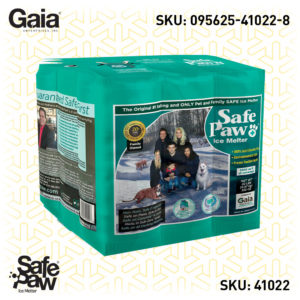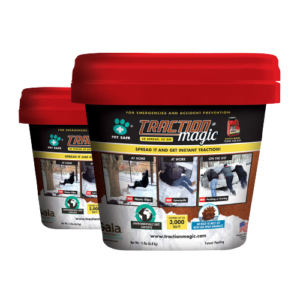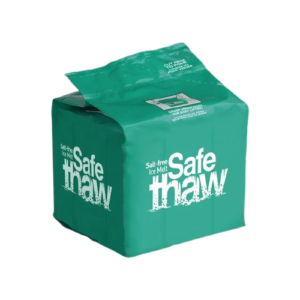Keeping Driveways Snow-free In The Upcoming Winter In Ohio

The 2020 Annual Winter Outlook released by the National Oceanic and Atmospheric Administration (NOAA) predicts cooler than average temperatures across the Northwest and Northern Plains and a milder winter for the southern and eastern portions of the country, including the upper Ohio Valley. Wetter than normal conditions are projected from the Pacific Northwest to the Great Lakes and middle Ohio Valley region.
So, this is the right time to think about how to safeguard your concrete driveway. Let’s uncover the causes behind concrete damage and how to steer clear of them.
Snow And Ice Melt

Safe Paw
The Original and the #1 Pet and Child Safe Ice Melt for over 20 years. Guaranteed environmentally safe – will not harm waterways and sensitive wetlands.
Some Of The Common Concrete Foes Are:
Noxious chemicals:
Many chemicals can affect your concrete adversely, and a few of them are widely used in ice melt solutions. Aluminum Chloride, Ammonium Nitrate, Ammonium Sulfate, Ammonium Chloride, Calcium Sulfate, Magnesium Sulfate, Magnesium Chloride, and Sodium Cyanide are some of the chemicals commonly found in ice melt that can damage your concrete. The use of ice melt on new concrete, which is more vulnerable, should also be done judiciously.
Freeze-thaw cycle:
When the water seeped in concrete freezes, it produces pressure that may result in long-term damage to your concrete driveway. Freeze-thaw damage may appear as either internal cracking or surface scaling. The most common ice melt, rock salt, only lowers the refreezing temperature to about 20 degrees Fahrenheit. This means that ice melt from rock salt will thaw and refreeze anytime the temperature fluctuates above and below 20 degrees, thus causing further damage.
Weather Forecast
[wpc-weather id=”2647″ /]How To Choose The Best Ice Melt For New Concrete?
A savvy homeowner is always on the lookout for a good ice melter for new concrete. Let’s understand what qualities should your ice melt have for it to be the best one.
Non-toxic & chemical-free:
If you are looking to ensure that your concrete survives this winter and many more to come, plan to use an ice melt that is non-toxic and chemical-free. Common ice melting salts burn the paws of our four-legged friends. They may also corrode the driveways and pathways. Fortunately, there are safe, non-toxic, and chemical-free ice melt solutions available in the market to make your winters safe and unpolluted. When using ice melt on new concrete, ensure that they do not corrode the upper layer, making it susceptible to further damage.
Prevents ice & snow from sticking:
Your ideal ice melter for new concrete should also work as pre-treatment. Some ice melt can prevent ice from sticking to surfaces for up to three days of using it, making shoveling a much easier task.
Prevents freeze-thaw cycle:
To preserve your concrete and extend its lifespan, find an ice melt product that will keep melted ice in a liquid state for a longer duration. This means that ice melt will not refreeze as easily or as often, thus preventing the freeze-thaw cycle.
This winter, make sure to protect your driveway from potential ice melt damage and pick up some concrete safe, pet safe, children safe, and environmentally friendly ice melt.



